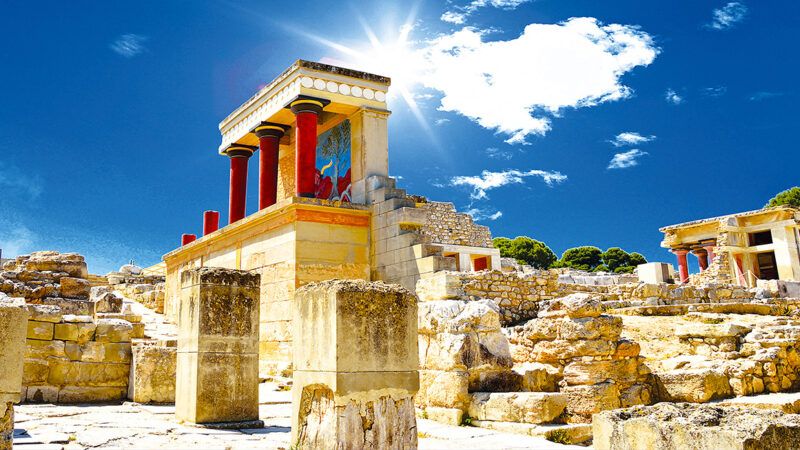Knossos Presents Dueling Ideas of Greek History
The world's most glorious monument to fakery is Knossos, the Greek site containing the legendary Palace of Minos.

The world's most glorious monument to fakery, outshining even Las Vegas and the Disney archipelago, is Knossos, the Greek site containing the legendary Palace of Minos. There are real ruins at this place—remnants of a time, more than 3,000 years ago, when Crete was a center of art, trade, and technology. But when Arthur Evans started his excavations there in 1899, things got complicated.
Evans "restored" much of the architecture with concrete, making irreversible changes that owed as much to his creative speculations as they did to the archeological evidence. He had painters decorate the walls, extrapolating whole frescoes from small fragments. Their art was beautiful, lively, and as authentic as a stuffed minotaur.
Evans also unleashed the idea that the island had been a matriarchal pacifist utopia. As Cathy Gere shows in her 2009 book Knossos and the Prophets of Modernism, this vision seized a lot of intellectuals' imaginations, with many people projecting their ideals onto Minoan Crete. The libertarian writer Albert Jay Nock declared that the Cretans enjoyed a thousand-year "period of unexampled peace and prosperity."
Rather than remove Evans' additions, today's keepers of Knossos offer two layers of commentary. Tour the grounds, and the signs will fill you in on modern scholars' best guesses about the realities of ancient life there. But they'll discuss Evans' Knossos as well. After all, his notions are part of the place's history too.


Show Comments (12)